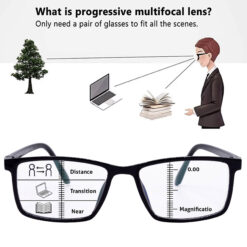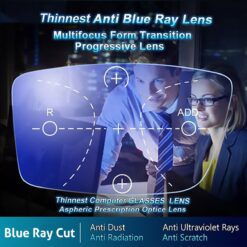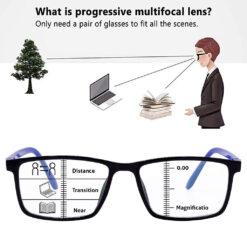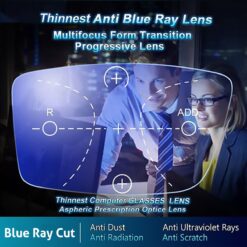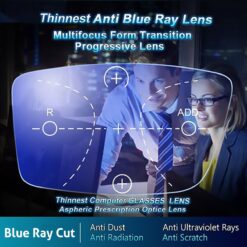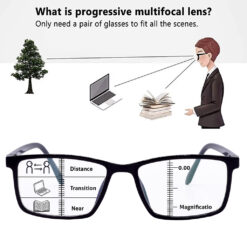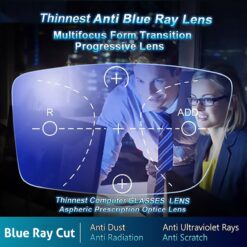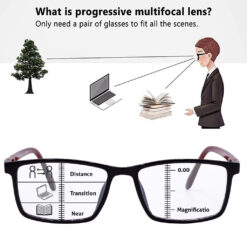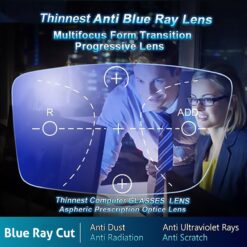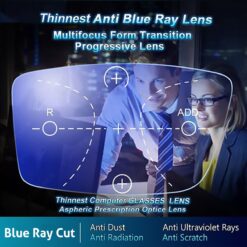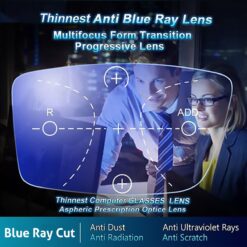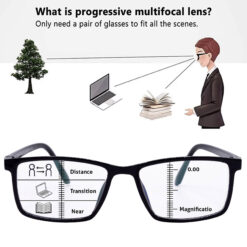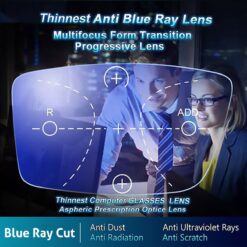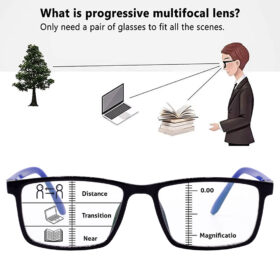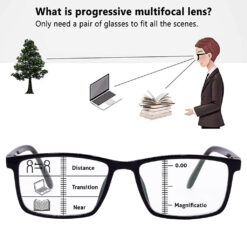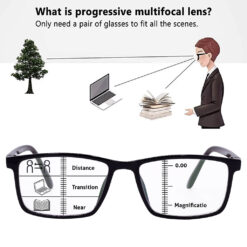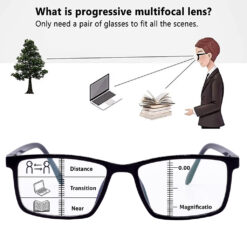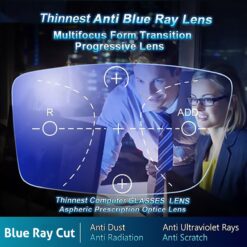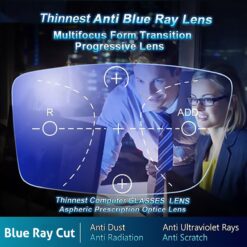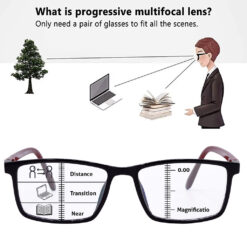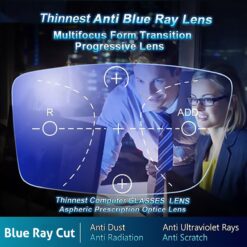Progressive Reading Glasses
Progressive Reading Glasses
Progressive Reading Glasses
Progressive Reading Glasses
Progressive Reading Glasses
Progressive Reading Glasses
Progressive Reading Glasses
Progressive Reading Glasses
Progressive Reading Glasses
Progressive Reading Glasses
Progressive Reading Glasses
Progressive Reading Glasses
Progressive Reading Glasses
Progressive Reading Glasses
Progressive Reading Glasses
Buy Reading Glass for Men Online – Complete Shopping Experience
Finding the perfect reading glasses shouldn’t feel like searching for a needle in a haystack. Whether you’re squinting at your morning newspaper or struggling with fine print on your smartphone, the right pair of reading glasses can transform your daily reading experience from frustrating to effortless.
The Indian eyewear market has evolved tremendously, offering men sophisticated options that blend functionality with style. From traditional single-vision readers to advanced blue light blocking technology, today’s reading glasses cater to every lifestyle and budget. You’ll discover how modern materials like TR90 and titanium create lightweight designs that feel barely there, while anti-reflective coatings eliminate annoying glare from digital screens.
Understanding Reading Glasses and Their Importance
What Are Reading Glasses and How They Work
Reading glasses work like magnifying tools for your eyes, using convex lenses to bring close-up objects into sharp focus. Think of them as personal assistants for your vision – they step in when your natural focusing power needs a helping hand. These specialized lenses compensate for the eye’s reduced ability to change shape and focus on nearby text or objects.
The magic happens through optical physics. Reading glasses typically use positive diopter measurements (indicated by a “+” sign) ranging from +0.75 to +3.50. Each lens bends light rays slightly inward, creating a virtual magnification effect that makes text appear larger and clearer. Unlike distance glasses, reading glasses are specifically calibrated for objects held 12-16 inches from your face – the typical reading distance.
Most men find reading glasses incredibly versatile for daily tasks beyond just reading books. You’ll appreciate them for checking text messages, reading ingredient labels while shopping, working on detailed hobbies like model building, or even threading a needle. Modern reading glasses often feature spring hinges and ergonomic nose pads to ensure comfortable wear during extended reading sessions.
Presbyopia: The Natural Aging Process Affecting Vision
Presbyopia isn’t a disease – it’s simply your eyes showing their age, much like how your joints might feel stiffer over time. This universal condition typically begins around age 40 when the crystalline lens inside your eye gradually loses its flexibility. The focusing muscles that once effortlessly adjusted for near and far vision start requiring more effort to do their job.
You’ll notice presbyopia’s onset through telltale signs: holding books at arm’s length, needing brighter light for reading, or experiencing eye fatigue after close-up work. By age 45, most people need reading glasses with +1.75 to +2.00 power, while those over 50 typically require +2.25 or stronger lenses. This progression continues gradually, which explains why you might need to update your reading glass strength every few years.
What many men don’t realize is that presbyopia affects everyone differently based on their original vision. If you were nearsighted in your youth, you might actually find reading easier as you age – at least initially. However, if you were farsighted or had perfect distance vision, presbyopia’s effects become noticeable sooner and may require stronger reading glasses.
Types of Reading Glasses Available for Men
Single Vision Reading Glasses
Single vision reading glasses represent the most straightforward solution for presbyopia, featuring uniform lens power throughout the entire surface. These glasses excel at one specific task: making close-up objects crystal clear within a fixed focal distance. You’ll find them perfect for reading books, newspapers, or documents where you maintain a consistent viewing distance.
The beauty of single vision readers lies in their simplicity and affordability. Starting from as low as ₹99 in India, they offer excellent value for occasional reading tasks. Most drugstore varieties fall into this category, available in standard increments of +0.25 diopters. You can easily test different strengths in-store by reading sample text charts to find your ideal power.
However, single vision reading glasses do have limitations. You’ll need to remove them when looking across the room or driving, as everything beyond arm’s length will appear blurry. Many men keep multiple pairs strategically placed – one beside the bed for bedtime reading, another in the car’s glove compartment, and a third at the office desk. This approach ensures you’re never caught without your readers when needed.
Blue Light Blocking Reading Glasses
Blue light blocking reading glasses have become essential in our screen-dominated world, combining traditional magnification with digital eye protection. These specialized lenses filter out 30-50% of blue light in the 380-500 nanometer range – the wavelengths most associated with digital eye strain and sleep disruption.
Modern blue light readers work particularly well for men who split their time between printed materials and digital devices. You’ll notice reduced eye fatigue during long computer sessions, less frequent headaches, and potentially better sleep quality when using screens before bedtime. The subtle yellow tint in some blue light lenses becomes practically invisible after a few minutes of wear.
Research on blue light glasses shows mixed results, but many users report subjective improvements in comfort during screen use. For ₹599-1,500, you can find quality blue light reading glasses that serve double duty – magnifying text while protecting against digital strain. Consider them especially valuable if you frequently switch between reading physical books and tablets or smartphones.
Anti-Glare Reading Glasses
Anti-glare reading glasses feature specialized coatings that dramatically reduce reflections from light sources, making them ideal for reading under bright conditions. The anti-reflective coating eliminates distracting glare from overhead lights, windows, or computer screens that can cause eye strain and reduce visual clarity.
You’ll particularly appreciate anti-glare readers when reading outdoors, in well-lit offices, or near windows where natural light creates bothersome reflections. The coating allows more light to pass through the lens rather than bouncing back, resulting in sharper, more comfortable vision. Many users report being able to read for longer periods without experiencing the squinting and fatigue associated with glare.
Beyond comfort benefits, anti-glare reading glasses offer cosmetic advantages too. The coating makes your lenses appear nearly invisible in photographs and reduces the “glasses glare” that can hide your eyes during conversations. While anti-glare coating adds to the cost, most men find the improved visual comfort and professional appearance worth the investment, especially for daily wear.
Computer Reading Glasses vs Traditional Reading Glasses
Computer reading glasses differ from traditional readers primarily in their focusing distance and lens features. While regular reading glasses optimize vision for 12-14 inches (typical book reading distance), computer glasses target the 20-26 inch range where most screens sit. This intermediate distance requires slightly less magnification than traditional reading glasses.
The power difference can be significant – if you need +2.00 reading glasses for books, you might only need +1.25 or +1.50 for computer work. Using reading glasses that are too strong for computer work forces you to lean uncomfortably close to the screen or crane your neck backward to find the right focal point. This positioning can lead to neck strain and shoulder tension over time.
Computer reading glasses often incorporate blue light filtering and anti-glare coatings as standard features, addressing the specific challenges of screen use. You’ll find them particularly valuable if you spend hours on computers, tablets, or smartphones for work. Many men discover that computer-specific readers reduce eye fatigue, minimize headaches, and make long work sessions more comfortable than trying to adapt traditional reading glasses for screen use.
Choosing the Right Reading Glass Power and Strength
Understanding Diopter Strength for Reading Glasses
Diopter strength represents the optical power needed to bring close objects into focus, measured in increments of 0.25 (such as +1.00, +1.25, +1.50). Think of diopters as the “zoom level” for your vision – higher numbers provide stronger magnification for closer focusing. The “+” symbol always precedes reading glass strengths, distinguishing them from distance glasses which use negative numbers.
Understanding the relationship between diopters and focal distance helps you choose appropriate strength. A +1.00 lens focuses optimally at about 39 inches, +2.00 at approximately 20 inches, and +3.00 at around 13 inches. This inverse relationship explains why stronger reading glasses require you to hold materials closer to achieve sharp focus.
Most reading glasses range from +0.75 to +3.50 diopters, with +1.25 to +2.50 covering the majority of presbyopia cases. You’ll find quarter-diopter steps provide sufficient adjustment for most people – the difference between +1.75 and +2.00 is noticeable enough to matter but not so dramatic as to cause discomfort. Starting with lower strength and gradually increasing as your presbyopia progresses helps your eyes adapt more comfortably.
Age-Based Reading Power Guidelines
Age provides a helpful starting point for determining reading glass strength, though individual variation means trying different powers remains important. These guidelines reflect average presbyopia progression, but your personal needs might differ based on your original vision, eye health, and reading habits.
For men under 40, +1.00 to +1.25 diopters typically suffice for occasional reading tasks or early presbyopia symptoms. The 40-45 age group commonly requires +1.25 to +1.75 strength, while those 45-50 usually need +1.75 to +2.25 power. After age 50, +2.25 to +3.00 diopters become more common as presbyopia reaches its mature stage.
Remember that these are starting points, not definitive prescriptions. Your lifestyle significantly influences your needs – someone who reads extensively might notice presbyopia earlier and require stronger correction sooner. Conversely, people who primarily use screens at arm’s length might function comfortably with lower powers for longer periods. Always test actual reading materials at your preferred distance rather than relying solely on age-based recommendations.
Self-Testing Methods for Reading Glass Strength
Self-testing for reading glass strength works best using printed materials you actually read regularly. Start by visiting a store that stocks multiple powers and bring along your smartphone, a book, or a newspaper – materials that represent your real-world reading challenges. Remove any existing glasses and hold your test material at your comfortable reading distance, typically 12-16 inches.
Begin with the weakest available strength and read a paragraph of normal-sized text. The correct power should make text appear crisp and clear without strain, while allowing comfortable reading posture. If text remains blurry, try the next stronger power. If you find yourself holding the material closer than normal or experiencing any discomfort, the strength might be too high.
Test each eye individually by covering one eye while keeping both open – some people have different power needs between eyes. Read for several minutes rather than just a quick glance, as eye strain symptoms develop over time. The ideal strength feels effortless and allows extended reading without fatigue. Many stores provide reading charts with different text sizes and power recommendations, but your actual reading materials provide the most accurate test.
Frame Styles and Materials for Men’s Reading Glasses
Popular Frame Shapes for Men
Rectangular frames dominate men’s reading glasses preferences, offering a classic professional appearance that suits most face shapes. These frames provide maximum lens area for reading, ensuring you have plenty of space to move your eyes without hitting frame edges. The clean, geometric lines complement business attire while remaining casual enough for leisure reading.
Round and oval frames offer a sophisticated alternative, particularly popular among men seeking a vintage-inspired or intellectual aesthetic. These shapes work exceptionally well for reading because they naturally follow the eye’s movement patterns during text scanning. Round frames can soften angular facial features, while oval shapes provide a timeless elegance suitable for any age.
Aviator-style reading glasses have gained popularity for their distinctive appeal and practical benefits. The larger lens area accommodates progressive additions well, and the slightly curved shape reduces peripheral distortion. Square frames with rounded corners strike a balance between modern style and classical comfort, making them versatile choices for men who want their reading glasses to complement multiple outfits and occasions.
Lightweight Materials: TR90, Titanium, and Acetate
TR90 represents the pinnacle of lightweight eyewear materials, offering exceptional durability with barely-there weight. This thermoplastic material bends without breaking, making it ideal for active men or those who frequently remove and replace their glasses throughout the day. TR90 frames can withstand significant stress while maintaining their shape, and they feel virtually weightless during extended reading sessions.
Titanium frames provide premium lightweight comfort combined with exceptional strength and hypoallergenic properties. Pure titanium weighs significantly less than traditional metals while offering superior corrosion resistance and flexibility. You’ll appreciate titanium’s ability to maintain its adjustment over time – these frames rarely loosen or distort with regular use. Though more expensive, titanium reading glasses often last years longer than conventional materials.
Acetate offers a lightweight alternative to traditional plastic with enhanced comfort and style options. This material allows for rich color variations and patterns while remaining comfortable for all-day wear. Acetate frames resist heat and chemical damage better than standard plastics, making them practical for men who work in challenging environments. The material’s natural warmth against skin feels more comfortable than cold metals, particularly during temperature changes.
Full-Rim vs Semi-Rimless vs Rimless Options
Full-rim reading glasses provide maximum lens protection and frame durability, making them ideal for daily use and active lifestyles. The complete frame surrounding offers excellent lens security and allows for easy lens replacement if needed. Full-rim designs accommodate stronger prescriptions better and provide more surface area for decorative elements or brand details.
Semi-rimless frames create a lighter appearance while maintaining structural stability through the top rim. This design reduces visual weight and provides an unobstructed lower field of view – particularly beneficial for reading glasses where you often look down through the lens. The open bottom design also makes cleaning easier and reduces fogging in temperature changes.
Rimless reading glasses offer the ultimate in lightweight comfort and minimal visual impact. These nearly invisible frames attach directly to the lens edges, creating an unobtrusive reading experience. Rimless designs work best for lighter prescriptions and require more careful handling due to exposed lens edges. They’re particularly popular among men who prefer subtle eyewear that doesn’t dominate their facial features.
Benefits of Different Reading Glass Features
Blue Cut Reading Glasses for Digital Protection
Blue cut reading glasses specifically target the 380-500 nanometer blue light spectrum emitted by digital devices, potentially reducing digital eye strain symptoms. These lenses work by filtering out high-energy blue wavelengths while allowing beneficial light to pass through. You’ll notice the subtle amber tint that characterizes most blue light filters, though newer coatings appear nearly clear.
The primary benefit lies in reducing the contrast between bright screens and surrounding environments, which can cause eye fatigue during extended use. Many men report less eye tiredness when switching between digital devices and printed materials throughout the day. The filtering effect may also help maintain natural circadian rhythms by reducing blue light exposure in evening hours.
While scientific evidence on blue light glasses remains mixed, user experiences suggest meaningful benefits for screen-heavy lifestyles. Consider blue cut reading glasses particularly valuable if you frequently use tablets for reading, work on computers while wearing readers, or experience eye strain during digital device use. The modest price increase over standard reading glasses makes them a worthwhile investment for digital comfort.
Anti-Reflective Coating Advantages
Anti-reflective coating transforms reading glasses from functional tools into precision optical instruments. This multi-layer treatment eliminates up to 99% of surface reflections, allowing maximum light transmission through the lens. You’ll immediately notice clearer, sharper text with reduced ghost images and distracting glare from various light sources.
The coating proves especially valuable for reading under challenging lighting conditions – bright overhead lights, window glare, or mixed indoor/outdoor environments. Instead of constantly adjusting your position to avoid reflections, anti-reflective readers let you focus comfortably in any well-lit space. The reduced squinting and eye strain translate to longer, more comfortable reading sessions.
Beyond visual benefits, anti-reflective coating provides aesthetic improvements by making lenses appear nearly invisible. This creates a more natural appearance in photographs and social interactions, as people can clearly see your eyes rather than lens reflections. The coating also makes lenses easier to clean and maintain, as it typically includes oleophobic treatments that repel fingerprints and smudges.
Lightweight Design for All-Day Comfort
Lightweight reading glasses eliminate the pressure points and discomfort associated with heavy frames, allowing comfortable wear throughout long reading sessions. Modern lightweight materials distribute weight evenly across the nose bridge and ears, preventing the sliding, pinching, or pressure marks that heavier glasses create. You can wear quality lightweight readers for hours without conscious awareness of their presence.
The psychological benefits of lightweight design shouldn’t be underestimated – glasses that feel substantial on your face can create subconscious stress and distraction. Lightweight frames allow you to focus entirely on your reading material without adjusting or repositioning your glasses. This becomes particularly important for prolonged activities like studying, working, or enjoying lengthy novels.
Weight reduction in reading glasses comes primarily from material choice and frame design rather than reduced durability. Modern lightweight frames often outperform heavier alternatives in flexibility and impact resistance. The combination of advanced materials like TR90 or titanium with thoughtful engineering creates glasses that feel almost weightless while maintaining long-term reliability and optical precision.
Prescription vs Non-Prescription Reading Glasses
When to Choose Over-the-Counter Options
Over-the-counter reading glasses work excellently for men with similar vision needs in both eyes and no significant astigmatism. If you’ve never worn glasses before and recently started having difficulty with close-up tasks, drugstore readers often provide an affordable and immediate solution. You can test different strengths easily and start using them right away without appointments or waiting periods.
Budget considerations make OTC readers particularly attractive, with quality options available from ₹99 to ₹1,500 in India. This allows you to keep multiple pairs in different locations – office, home, car – without significant financial investment. If you frequently lose or break glasses, the low replacement cost makes OTC readers practically worry-free accessories.
However, recognize the limitations of one-size-fits-all approaches. OTC readers assume identical power needs for both eyes and standard pupil distances, which doesn’t match many people’s actual anatomy. They also lack correction for astigmatism or other vision irregularities that might compound presbyopia symptoms. Consider them ideal for occasional use or as backup pairs rather than primary vision solutions.
Benefits of Custom Prescription Reading Glasses
Prescription reading glasses offer precise vision correction tailored to your unique eye anatomy and visual needs. An eye examination reveals not just your reading power requirements but also any astigmatism, muscle imbalances, or other conditions affecting your near vision. Custom lenses address these individual variations for optimal clarity and comfort.
The fitting process ensures proper lens positioning relative to your pupils and facial geometry. This precise alignment eliminates optical distortions and eye strain that can occur when lenses aren’t centered correctly. Prescription readers can also incorporate different powers for each eye if needed, providing balanced binocular vision that OTC glasses cannot match.
Advanced lens options become available with prescription readers – progressive multifocals, specialized coatings, high-index materials for thinner lenses, and photochromic lenses that darken in sunlight. These features, while more expensive initially, often provide superior long-term value through enhanced functionality and durability. The comprehensive eye exam also monitors your eye health, potentially detecting conditions before they become serious.
Cost Comparison and Value Considerations
Non-prescription reading glasses offer immediate affordability with basic models starting around ₹99 and quality options reaching ₹1,500. This low entry cost allows experimentation with different styles and powers without significant commitment. You can easily maintain multiple pairs for different activities or locations, spreading convenience throughout your daily routine.
Prescription reading glasses typically cost ₹2,000-10,000 depending on frame choice and lens options. However, this higher investment often delivers superior optical quality, precise fit, and longer-lasting satisfaction. Custom glasses eliminate the trial-and-error process of finding the right OTC strength and provide consistent vision correction across all activities.
Consider the total ownership experience when comparing costs. Prescription readers might last several years with professional adjustments and repairs available, while OTC glasses often get replaced frequently due to poor fit, damage, or changing needs. Professional eye exams every 1-2 years ensure your prescription remains accurate and monitor overall eye health – value that extends far beyond simple vision correction.
Shopping for Reading Glasses Online in India
What to Look for When Buying Online
Online reading glasses shopping requires attention to frame measurements, particularly bridge width, lens width, and temple length for proper fit. Most reputable sellers provide detailed size charts with millimeter measurements – compare these to glasses you currently wear comfortably. Bridge width (the nose piece) significantly affects comfort, while temple length determines how well glasses stay positioned during use.
Lens quality indicators include material specifications (CR-39, polycarbonate, or high-index options) and coating descriptions. Look for detailed product descriptions mentioning scratch resistance, UV protection, and optical clarity standards. Reputable online retailers often specify the country of origin for lenses and frames, with detailed manufacturing information indicating quality control attention.
Customer reviews provide invaluable insights into actual wearing experiences, comfort levels, and durability over time. Pay particular attention to reviews from customers with similar age ranges and reading needs. Look for comments about frame adjustment requirements, lens clarity at different distances, and long-term satisfaction. Photos from verified buyers can reveal actual appearance and build quality better than promotional images.
Size and Fit Considerations
Frame measurements critically determine comfort and optical performance for reading glasses purchased online. The lens width should accommodate your reading habits – wider lenses provide more peripheral vision for scanning text, while narrower lenses work well for focused reading tasks. Standard reading glasses typically feature 45-55mm lens widths, suitable for most adult men.
Bridge fit affects both comfort and lens positioning relative to your eyes. A bridge that’s too narrow pinches the nose and pushes the glasses down, while too wide creates sliding and poor optical alignment. Most men find 16-20mm bridge widths comfortable, but individual nose shapes vary significantly. Some online retailers offer virtual try-on tools using webcam technology for better fit assessment.
Temple length determines how securely glasses stay positioned during head movement and whether they press uncomfortably behind the ears. Standard temple lengths range from 135-150mm, but men with larger heads might need longer temples for proper fit. Consider adjustability features like spring hinges or flexible temple materials that accommodate minor size variations and provide more forgiving fit characteristics.
Return Policies and Quality Guarantees
Generous return policies are essential when buying reading glasses online, as fit and optical comfort can only be truly assessed through actual use. Look for retailers offering at least 14-30 days for returns with full refunds, including shipping costs. Some companies provide “fit and style” guarantees specifically addressing the uncertainty of online eyewear purchases.
Quality guarantees should cover manufacturing defects, lens optical quality, and frame durability for reasonable periods. Reputable sellers often provide 6-12 month warranties against defects while excluding normal wear or accidental damage. Scratch-resistant coating warranties and lens replacement options add value for long-term ownership satisfaction.
Customer service accessibility becomes crucial when issues arise with online purchases. Check for multiple contact methods – phone, email, and live chat – with reasonable response times. Reading glasses may require minor adjustments for optimal fit, so local service partnerships or mail-in adjustment services can enhance the online buying experience. Clear policies about prescription changes or power adjustments provide additional peace of mind.
Caring for Your Reading Glasses
Proper Cleaning and Maintenance
Daily cleaning habits significantly extend reading glass lifespan and maintain optimal visual clarity. Use microfiber cloths specifically designed for optical lenses rather than clothing, tissues, or paper towels which can scratch delicate coatings. Rinse glasses with lukewarm water before wiping to remove dust particles that act like sandpaper during cleaning.
Lens cleaning solutions or mild dish soap work better than household cleaners which can damage anti-reflective or other specialized coatings. Apply cleaning solution to both sides of lenses, gently rub with microfiber cloth in circular motions, then dry with a clean portion of the cloth. Avoid harsh chemicals, window cleaners, or alcohol-based products that can strip protective coatings over time.
Frame maintenance involves regular inspection of screws, hinges, and nose pads for looseness or wear. Most optical shops provide free minor adjustments and screw tightening – taking advantage of these services prevents more expensive repairs later. Clean frame surfaces with mild soap and water, paying attention to areas where skin oils accumulate around nose pads and temple tips.
Storage Solutions to Extend Lifespan
Proper storage prevents the majority of reading glasses damage, particularly lens scratches and frame distortion. Always store glasses in a protective case when not in use, lens-side up to prevent surface contact with case interiors. Hard cases provide maximum protection for travel or busy environments, while soft pouches work well for desk or bedside storage.
Multiple storage locations ensure your reading glasses remain accessible while staying protected. Keep a designated case beside your favorite reading chair, another at your workspace, and a travel case in your car or briefcase. This system reduces the temptation to carelessly set glasses down on surfaces where they might get scratched or knocked off.
Temperature extremes can damage frame materials and lens coatings, so avoid leaving reading glasses in hot cars or freezing environments. Sudden temperature changes can cause lens coatings to crack or frames to warp, particularly with plastic materials. Room temperature storage in consistent environments preserves both optical quality and frame integrity over extended periods.
When to Replace Your Reading Glasses
Vision changes necessitate reading glass replacement every 1-3 years as presbyopia progresses. You’ll notice replacement needs when you start holding reading materials farther away, experience more frequent eye strain, or find your current glasses insufficient for comfortable reading. Regular eye exams help track these changes and recommend appropriate power adjustments.
Physical damage indicators include scratched lenses that interfere with vision, loose hinges that affect fit, or bent frames that cause discomfort. While minor damage might seem tolerable, compromised optical quality can cause eye strain and headaches that worsen over time. Damaged reading glasses often indicate it’s time to upgrade to better quality or more suitable styles.
Lifestyle changes might prompt replacement even when glasses remain functional – new hobbies requiring different focal distances, increased screen time needing blue light protection, or style preferences evolving. Consider replacement an opportunity to incorporate new features like lightweight materials, advanced coatings, or more flattering frame styles that enhance both function and appearance.
Latest Trends in Men’s Reading Glasses 2025
Contemporary Frame Designs
Oversized geometric frames are dominating 2025 men’s reading glasses trends, offering larger lens areas for comfortable reading while making bold style statements. These frames provide expanded fields of view particularly beneficial for reading glasses, allowing more eye movement without frame interference. The sophisticated proportions complement modern aesthetics while serving practical reading needs.
Transparent and crystal-clear frames continue gaining popularity for their versatility and minimalist appeal. These frames virtually disappear on the face, allowing your natural features to predominate while providing necessary vision correction. Clear frames work exceptionally well with professional attire and casual wear alike, making them ideal for men who want understated elegance in their reading glasses.
Mixed-material designs combining metals with acetates or incorporating unique textures are emerging as premium options. These hybrid constructions allow designers to optimize different areas for specific benefits – lightweight metals for structural components combined with comfortable acetates for skin contact areas. The resulting frames offer both visual interest and functional advantages over single-material designs.
Tech-Enhanced Lens Options
Advanced blue light filtering technology has evolved beyond basic yellow-tinted coatings to include precision-tuned filters that appear virtually clear. These sophisticated coatings selectively target problematic blue wavelengths while preserving beneficial light spectrums. Men can now enjoy digital eye protection without the color distortion associated with earlier blue light glasses generations.
Photochromic reading glasses that darken automatically in sunlight are gaining acceptance for their convenience and versatility. These adaptive lenses eliminate the need for separate reading sunglasses while providing UV protection during outdoor reading activities. The technology has improved significantly, with faster transition times and more neutral color options appealing to style-conscious users.
Progressive lens technology in reading glasses offers seamless transition between different viewing distances without visible lines. These advanced lenses incorporate multiple focal powers within single lenses, providing clear vision for reading, computer work, and intermediate distances. While more expensive than traditional single-vision readers, progressives eliminate the need for multiple pairs of glasses.
Sustainable Materials and Eco-Friendly Options
Eco-conscious frame materials derived from renewable sources are emerging as premium options in men’s reading glasses. Bio-based acetates made from cotton and wood pulp offer the same optical clarity and durability as traditional plastics while reducing environmental impact. These materials often feature unique natural patterns and textures that create distinctive, one-of-a-kind appearances.
Recycled metal frames incorporating reclaimed titanium, stainless steel, or aluminum are appearing from environmentally responsible manufacturers. These materials maintain the strength and lightweight properties of virgin metals while reducing mining and processing impacts. The recycled content often adds character through subtle variations in color and texture not found in conventional metals.
Sustainable packaging initiatives are transforming how reading glasses reach consumers, with biodegradable cases, recycled cardboard packaging, and reduced plastic components. Many manufacturers now offer repair services and upgrade programs to extend product lifecycles rather than encouraging frequent replacement. These approaches align with growing consumer awareness about environmental responsibility in purchasing decisions.
Common Reading Glasses Problems and Solutions
Eye Strain and Headache Issues
Incorrect reading glass power represents the most common cause of eye strain and headaches among new users. Glasses that are too weak force your eyes to work harder, creating fatigue and discomfort, while overpowered lenses cause similar problems by making you hold reading materials too close. The solution involves careful power selection through proper testing with actual reading materials at comfortable distances.
Poor quality lenses with optical distortions can cause significant strain even with correct power measurements. Inexpensive lenses often feature inconsistent thickness, poor optical clarity, or inadequate coatings that create visual artifacts. Investing in higher quality lenses with precise optical properties eliminates these issues and provides clearer, more comfortable vision for extended reading sessions.
Adaptation periods are normal when first using reading glasses, typically lasting 3-7 days as your brain adjusts to the magnification. Initial mild headaches or dizziness usually resolve as you become accustomed to the optical changes. However, persistent discomfort after one week suggests incorrect power, poor fit, or underlying vision issues requiring professional evaluation.
Fitting Problems and Adjustments
Frame width mismatches create pressure points and sliding issues that compromise both comfort and optical performance. Glasses that are too narrow pinch the temples and create pressure headaches, while oversized frames slide down the nose and position lenses incorrectly relative to your eyes. Proper frame width should feel secure without pressure, with minimal adjustment needed during normal activities.
Bridge fit problems affect both comfort and lens positioning, significantly impacting reading glass effectiveness. A poorly fitting bridge causes glasses to slide down, creating viewing angles that strain neck muscles and distort optical clarity. Professional adjustment services can modify bridge width and angle to achieve optimal positioning, often transforming uncomfortable glasses into comfortable daily-wear options.
Temple length and curvature adjustments ensure glasses stay properly positioned without excessive pressure behind the ears. Many fitting issues result from temples that are too short, too long, or improperly curved for individual head shapes. Optical shops typically provide free basic adjustments for frames purchased from them, while independent adjustment services are available for online purchases.
Quality Concerns with Budget Options
Low-cost reading glasses often feature inconsistent lens powers between left and right eyes, creating binocular vision problems and eye strain. Manufacturing tolerances in budget lenses may vary significantly from labeled powers, resulting in blurred vision or discomfort. Quality control testing ensures premium lenses meet precise optical specifications for consistent, comfortable vision correction.
Frame durability issues plague many budget reading glasses, with cheap hinges, brittle plastics, and poor construction leading to frequent breakage. While the low replacement cost might seem acceptable, constantly broken glasses create inconvenience and potential safety issues when you need vision correction urgently. Moderate investment in quality frames often proves more economical long-term through reduced replacement frequency.
Coating quality and longevity differ dramatically between budget and premium reading glasses. Inexpensive anti-reflective or scratch-resistant coatings may peel, crack, or wear off within months of use, leaving lenses more vulnerable to damage and optical interference. Professional-grade coatings maintain their properties for years with proper care, providing consistent performance and protection for the underlying lenses.
Conclusion
Choosing the right reading glasses transforms your daily reading experience from strain to comfort, opening up a world of clear, effortless vision for all your close-up activities. The modern eyewear market offers sophisticated solutions that blend cutting-edge technology with timeless style, ensuring you’ll find perfect matches for both your vision needs and personal aesthetic preferences.
Remember that reading glasses are investments in your comfort, productivity, and quality of life. Whether you choose affordable over-the-counter options for occasional use or invest in custom prescription lenses with advanced coatings, the key lies in understanding your specific needs and matching them with appropriate features. Take time to test different powers, explore various frame styles, and consider future needs as your vision naturally changes with age.
The convenience of online shopping, combined with generous return policies and quality guarantees, makes finding your ideal reading glasses easier than ever. Don’t let presbyopia limit your reading enjoyment – embrace the solutions available and rediscover the pleasure of clear, comfortable vision for all your favorite activities.

